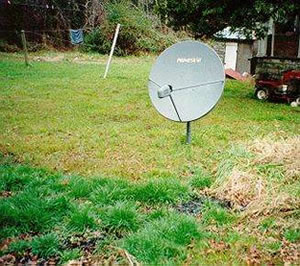Kent County Septage Management - Septic Systems Information







Septic System Components
Septic System Failure
Septic System Maintenance
When a public sewer line is unavailable for a home or business, a septic system is used to treat the wastewater that is produced. Standard septic systems utilize decades-old technology to treat waste as it passes through the system components. Though simple, these systems must be maintained to function properly. The overall goal of a septic system is to ensure that the wastewater has gone through enough filtration within the soil to clean it before it reaches drinking water well sources or surface waters. This is essential in order to protect human health and the environment.
Septic Systems have three key components - the plumbing, septic tank, and soil absorption field or drainfield. The plumbing is the most visible portion of the system, but all components need to be understood and cared for in order for the system to function properly. All three system parts work together to transport and treat the waste created within the home, using bacteria and soil to process and decompose the waste from toilets, showers, and sinks. With regular maintenance and care, this system should last around thirty years.
The plumbing includes pipes that collect home wastewater from bathrooms, kitchens, and laundry rooms, and delivers it to the septic tank buried within the ground.
Septic tanks are watertight tanks whose size is based on the amount of wastewater discharged from the home within a 24 to 48 hour period. Solids settle to the bottom to form the sludge layer while lighter materials float on the surface to form the scum layer. The solid material is stored within the tank. Some of the solids are decomposed by naturally occurring bacteria and the remainder must be removed by regular pumping. Only the wastewater filters into the drainfield.
The drainfield consists of a distribution box, which is a small concrete box into which effluent water is discharged. The wastewater is then channeled into buried pipes that are perforated on the bottom to allow the wastewater to seep through the soil. Microbial, chemical, and physical processes occur within the soil to purify the wastewater as it percolates into the groundwater. If a septic system is properly installed, used, and maintained, the wastewater will undergo several purifying processes before it enters the groundwater.
An improperly maintained septic system is more likely to fail, but all systems will have problems at the end of their natural life. It is important to take immediate action if you see signs of failure. It will only be more expensive to repair your septic system as time goes on, especially if there is damage to your home and yard. In addition, failing septic systems may expose you and your family to harmful bacteria and chemicals. Not all failures will be obvious, but some signs you should be aware of are:
- Sewage odors in your home and yard
- Slow draining sinks and toilets
- Gurgling sounds in the plumbing or plumbing back-ups
- Soggy soil surrounding the septic tank or drainfield
- Lush green grass or excessive plant growth near the drainfield
- Excessive algae growth in the nearby water
Homeowners need to think of their septic system like they think of the family car. Septic systems need regular maintenance to run smoothly or they may fail and require expensive repairs. No septic system will last forever.
When too much water flows through the septic system, it is released into the soil before it as time to be properly treated. Control the amount of water use within the home by implementing the following tactics:
- Repair leaky faucets, failing appliances, etc., immediately.
- Install low flow showerheads, toilets, etc.
- Only run laundry and dishwashers when they have a full load. Also, distribute the laundry throughout the week so that the septic system isn't overloaded.
- Reduce the length of showers and the number of toilet flushings.
Chemicals added to septic systems can kill the bacteria that are responsible for breaking down solid wastes. Without these micro-organisms, septic systems will not function properly. Paper products other than toilet paper can clog a septic system. These materials should never be poured down the drain or flushed into toilets:
Motor oils/fuels Acids and cleaners Filter tip cigarettes Paints, polishes, and solvents Paper towels and facial tissues Fats and greases Disposable diapers Pesticides and fertilizers Tampons and sanitary napkins
Remember that no septic system will last forever. The average system has a life of 25 to 30 years if properly used and maintained. Proper operation and maintenance will maximize your septic system's life. Maintain your septic system:
- Monitor your septic tank yearly and have a licensed contractor remove solid material (sludge and scum) from the tank every one to five years, depending on your household use.
- Mow, but do not add fertilizer to the grass growing above the septic system.
- Do not park cars or other heavy equipment on the drainfield area.
- Do not place swing sets, sand boxes, gardens, etc. on the drainfield.
- Do not plant shrubs or trees on or near the septic system area, as their roots may clog the system.
- Divert other sources of water away from the drainfield through the use of roof drains, sump pumps, etc.
